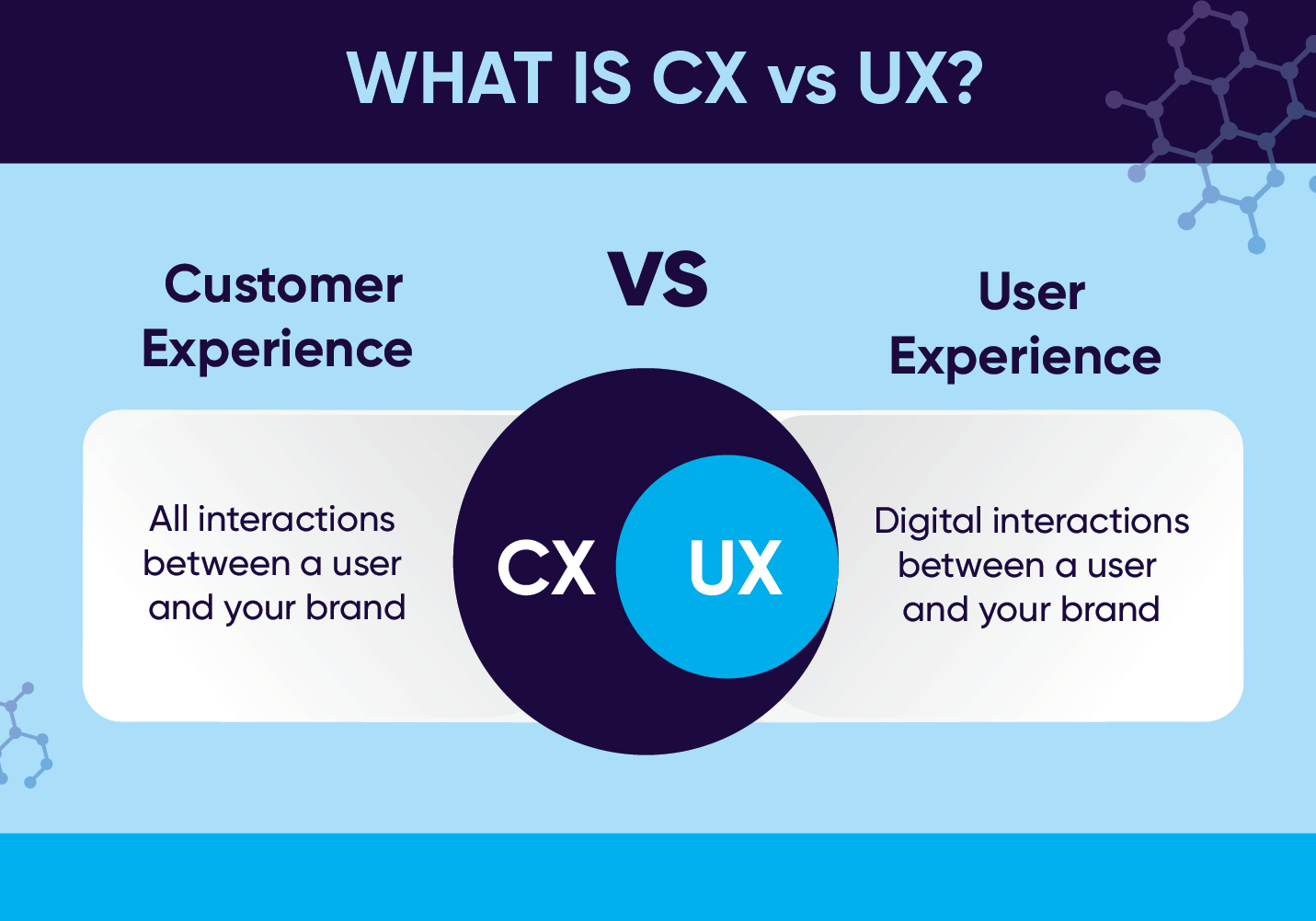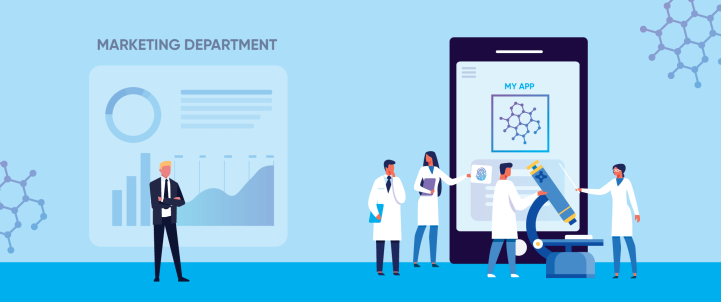As mobile marketers, you have it rough nowadays.
If your budgets haven’t been cut yet, you now have to navigate carefully between bombarding customers with messages or not communicating with them enough; between using empathy in your campaigns and appearing insincere, or trying to do marketing as usual.
What the current challenge boils down to is this: how do you delight mobile app users despite a crisis that has upended mobile habits globally?
Optimizing the customer experience (CX) can work to convert prospects into paying customers, but more importantly, at a time like this, it can help your app retain its hard-earned customer base.
So how do you improve your CX and keep all those customers happy?
What is Customer Experience?
The first question that must be defined for brands is: what is customer experience? Is it just about the app? Or does it encompass the entire breadth of interactions?
CX vs. UX
Traditionally, the term to define every interaction a brand has with customers was “user experience” or UX. However, because the term emerged during this era of heavy computer and mobile usage, UX has more recently been understood to mean any digital interaction with a brand.
Examples of UX: using your app’s interface, reading blog posts on your website, clicking through from one of your marketing emails, reading your brand’s social media posts.
Meanwhile, the term “customer experience” or CX is now used to describe all interactions between the customer and your brand. In the CX vs. UX debate, it’s easier to think of the user experience as a subset of the larger customer experience.
Examples of CX: chatting with customer support/helpdesk, receiving billing notices, watching a live sales demo. 
Why Invest in a Great Customer Experience Strategy?
A good customer experience can make a tremendous difference. First off, because winning over customers means a corresponding rise in repeat business and longevity for your brand. But more importantly, during a crisis like this, CX can keep you from losing your precious app customers.
Of course, this will also depend on whether your app is in a category that is thriving during this pandemic. According to our Q1 Data Report on the Impact of COVID-19 on Daily App Usage, app categories such as entertainment, education, groceries, and health are seeing great surges in usage.
Our real-time dashboard shows the current trend of daily active users (DAUs) across 20 app categories to help you understand the effect of the virus across the industry.
Customers Demand Authenticity. This pandemic is changing global priorities left and right. What was cool and a must-have at the start of the year is probably no longer on anyone’s wishlist. With health and safety at the forefront of your customers’ minds, your brand now has the added pressure of providing an experience that is authentic. Why?
During times of uncertainty, people want to be seen and understood. All your users are now hyper-sensitive to a brand’s tone and motive. If you are simply reaching out to sell them something, you’ll come across as insensitive. If you use empathetic words to appear like you care but THEN try to sell them something, you risk looking opportunistic.
Now is the time to look at your CX and your planned campaigns and evaluate whether your strategy is authentically trying to deliver value to your customers… or merely an excuse to sell your product.
Customers Still Demand Experiences. Today, all customers expect a red carpet treatment whether your app offers groceries or streaming media or gaming. And they can easily switch to your competition because they have innumerable options to choose from. If you delight prospects with your customer experience, you’ll solve your customer retention challenges.
- 84% of customers said that being treated like a person, not a number, was important to winning their business.01
- 59% of global consumers felt companies had lost touch with the human element of the customer experience, and 75% of customers preferred to interact with a human versus an automated machine.*
- When asked what single factor affected their decision to buy, over half of consumers mentioned the overall enjoyment of the purchase experience.03
- And to make matters more complex, we’re heading into a future where searching for an app and purchasing the app are increasingly turning into the same experience.04 The borders between separate actions are disappearing.
Faster Revenue. It comes as no surprise that companies with great CX earn revenues faster than those who don’t prioritize the customer experience. Some stats:
- According to a Forrester and Adobe study, experience-driven businesses report driving faster topline growth with a 15% average revenue growth rate versus only 11% with other companies surveyed.02
- In a Salesforce study, they found that 67% of customers say they will pay more for a great experience.01
Customer Loyalty. There’s another opportunity that lies in building a satisfying CX design: the chance to turn one-time customers into repeat customers and loyal brand champions.
- 57% of customers have stopped buying from a brand due to a competitor providing a better experience.01
- 76% of customers say it’s easier than ever to take their business to a competitor.01
The Challenges of Great CX Design
Any brand optimizing their CX design faces the challenge of coordinating all the moving parts that make up your mobile app. Not just between having too many people involved in the decision making, but also with the current reality of remote work adding to the spectrum.
The Cooks-to-Broth Ratio
Like any big project, CX optimization might end up having too many cooks in the kitchen resulting in a broth that’s either too salty or too bland. A favorite example: the minute your CX efforts touch upon the company website, expect a deluge of stakeholders from marketing to sales to development, all needing to get their two cents in.
With everyone getting their say, you run the risk of diluting the experience and communicating very different things at each step. Result? A schizophrenic message where the website, the app landing page, and your retargeting ads are all saying different things.
CMO Challenge: Marketing by committee rarely works without a CMO enforcing a unified vision. Get stakeholder input early but ensure that approvals are limited to only a few people or else the entire process will get bogged down trying to please everyone.
Remote Work Adding to the Complexity
If your organization is used to face-to-face meetings, this new remote work reality is probably adding more problems to an already perilous situation. But even when lockdowns are lifted and movement can be unrestricted, there is bound to be some lasting effect in how we will work in the near future.
Already, a survey is showing that workers prefer this remote reality: 36% of workers remotely working said they would like to continue to work from home after the pandemic is over.*
No Well-Defined User Journey
Conversion is the end result of a user journey — before the cycle starts over with a repeat purchase. You want your users to reach that goal, which is why you push them toward conversion with every engagement campaign.
But if your entire UX makes it difficult for the user to see value in the simplest way possible, then you’re sabotaging the customer experience. Imagine a photo sharing app where it takes 4 taps to get from app launch to actually posting your photo. Introducing this kind of complexity will keep users from fully adopting your app — they’ll be too frustrated to bother waiting for an update.
CMO Challenge: Define the user journey and clear the roadblocks to conversion. Simplify, and lessen the moving parts so there is only the CTA to focus on. Make the content you present to users match their intent!
The Legitimacy Problem of CX
For many brands, the customer experience faces a severe attention problem. Namely that their leadership fails to see the value of investing resources into improving CX. Possibly because data is based less on hard numbers than on theories and frameworks. Executives then fail to see the ROI of improving your app’s UX behavior, or how long the customer support team takes to respond to tickets, for example.
The total number of churned users is proof that there’s room to improve the customer experience. And if no actions are taken, then the cost of losing these customers will continue to bleed your revenues dry.
CMO Challenge: Prioritize and champion all CX efforts as a way to foster retention. Educate other executives about how even small changes in CX can drive retention (and revenue) up.
Customer Experience Strategy: Top Tactics
A delightful customer experience is essential to keep customers returning. But what actual strategies can you put into action during this crisis to improve CX ASAP?
1. Get the Data via Feedback + Analytics
Every brand likes to think it’s customer-centric, but the companies that truly listen to customer feedback are the ones who monitor their analytics closely. After all, you can’t optimize an experience unless you know how customers feel about the experience.
This means having audience analytics in place to measure how users navigate your app. There has to be a way to see where your users are dropping off, what specific friction points are leading to their uninstalls, and how much each churned user is costing you.
This also means there should be an easy way to gather feedback — no matter what step of the user journey a customer is in. Ask them how you’re doing. Not just when they look like they’re about to churn, but even when they’re at the peak of your app usage. Give them multiple ways to communicate with you and monitor each of those channels.
TOOLS:
- Google’s HEART Framework: This is an effective tool to evaluate the quality of your user experience and the impact of UX changes. HEART stands for a customer’s Happiness, Engagement, Adoption, Retention, and Task Success.
- Funnels: Identify how users navigate your app and where they drop off before reaching a conversion step.
- Flows: Look at all the possible conversion paths customers could take so you know how and where to engage them within your app.
2. Segment Users By Intent and RFM
One of the easiest ways to wreck the customer experience is to send your users the same offers regardless of where they are on the customer journey. That one-size-fits-all approach won’t win you any new customers, that’s for sure.
And this is the reason customer segmentation is so key to giving customers a better experience. Simply put, the right kind of segmentation allows you to target users with messages that match their behavior within your app, their personal preferences, and even their purchase intents.
TOOLS:
- Intent Based Segmentation: This tool takes segmentation a step further by grouping users based on the actions they will perform in the future. This CleverTap feature predicts a user’s propensity toward achieving a specified goal (e.g., will uninstall by end of the month, or will likely purchase in the next 15 days), which then allows you to engage the user with an appropriate campaign designed to meet your KPI.
- Automated Segmentation by RFM Analysis: Even better, is automated segmentation via RFM — where RFM stands for Recency and Frequency (of app usage) and the Monetary value (that a user has already given your app). This means bidding goodbye to rule-based grouping of users in favor of letting AI manage the process automatically so you can market to those at risk of churn, or new users with the potential to become repeat purchasers.
3. Give Them Consistent Experiences
Because you’re providing a customer with a seamless journey from prospect to paying customer to champion, you should be able to coordinate all the various moving parts of your campaigns. This means consistency when communicating your marketing messages to users — whatever the channels they’re on.
Having a martech stack that allows you to engage customers on multiple channels as well as orchestrate your omnichannel campaigns is essential to a streamlined CX.
But the other part of this is giving users an app experience that delights them. And in order to test and deploy the latest UX changes that answer their needs, you’ll need a way to run, analyze, and scale your product experiments.
TOOLS:
- Use the communication channels your users are on: email, social media, WhatsApp for Business, mobile SMS/MMS, push notifications, and so on.
- Screen A/B Testing: Optimize your app’s experience by making it easy to run, analyze, and scale product experiments. Test new UI, features, and workflows to see if any one version actually moves the needle on key metrics such as revenue and retention.
Is CX Design Worth the Investment?
Yes, it is.
When you go through a shared struggle alongside your customers and yet continue to show authentic support for them, you are building and strengthening your relationship with them. Guess who will support your brand long after the pandemic has passed?
Fixing your customer experience now is one step toward retaining those customers no matter what rough patches the world throws at you.
So yes, CX optimization will aid in your customer retention efforts.
The trick is to continually test your hypotheses on what could impact CX. Monitor the results. Implement the winners of your tests. And then take into consideration all feedback from users. Because, after all, it’s their experience you’re spending all this effort to try to improve.

The Experience Optimization Pocket Guide
Shivkumar M 
Head Product Launches, Adoption, & Evangelism.Expert in cross channel marketing strategies & platforms.
Free Customer Engagement Guides
Join our newsletter for actionable tips and proven strategies to grow your business and engage your customers.















































